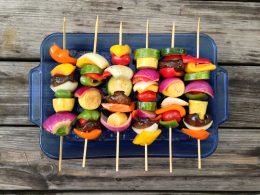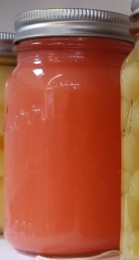 Maceration of fruit is simply giving it a good soak. This technique helps break down the cell walls in fruit to release flavor and aroma from within the fruit. The softened, and newly flavored, fruit can be used as a sauce, a dessert, or a filling.
Maceration of fruit is simply giving it a good soak. This technique helps break down the cell walls in fruit to release flavor and aroma from within the fruit. The softened, and newly flavored, fruit can be used as a sauce, a dessert, or a filling.
Ingredients to help macerate fruit include sugar, and a variety of alcohols such as liquors, liqueurs, and wine. Water, fruit juice and vinegar can also be used. Sugar helps draw out the water inside the fruit which reduces the internal pressure inside the fruit and it relaxes and softens. Alcohol triggers the osmosis process to draw water from inside the fruit.
How long this process takes can vary from about 30 minutes to a couple days. The time depends on the thickness of the fruit skin, the texture of the flesh, and the desired outcome. If mixing a variety of fruit, start with the firmer or thick-skinned fruit, then add the softer fruit later.
Source: www.finecooking.com/article/the-science-of-maceration


